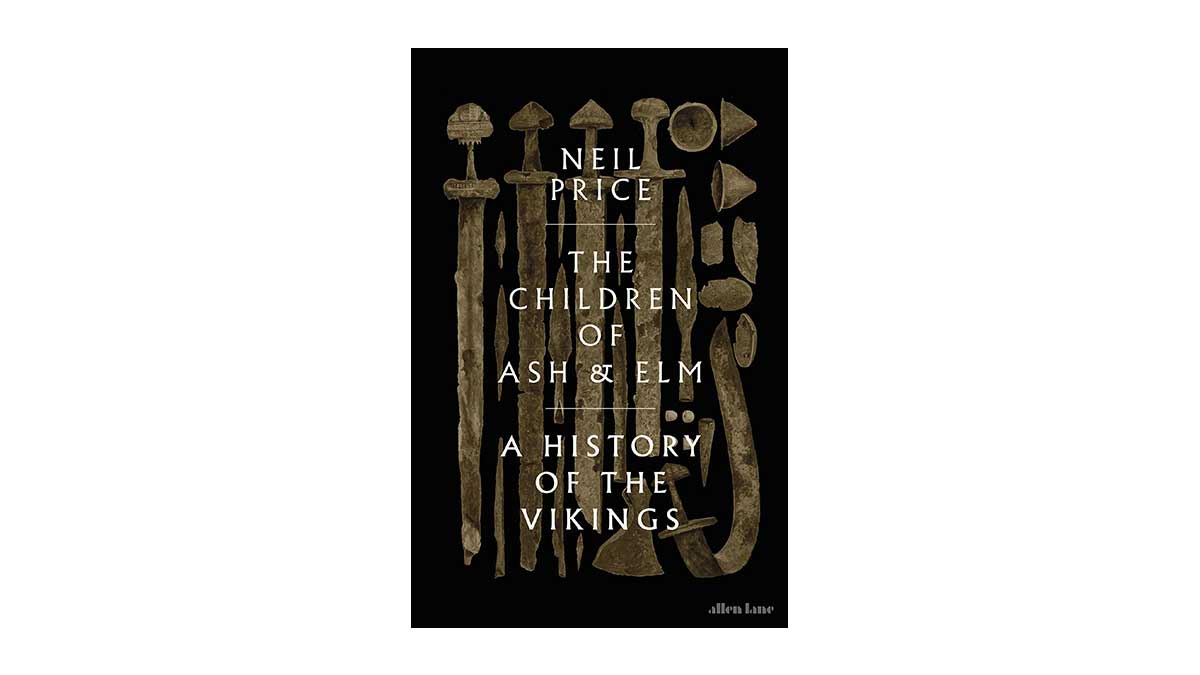Neil Price’s history of the Vikings offers a modern and academic perspective on a long-dead race and a culture, originating in Scandinavia, whose influence and destiny are an integral part of the UK’s story.
It was an interest in learning more about this shared cultural heritage with the Danes who led raids on our island, as well as Ireland, that drew me to The Children of Ash & Elm. I’d studied classics and consequently had little time for the post-Roman period in my formative years. Humility comes with age (if at all), and so it was time to learn more about the Vikings and their influence on the world, and separate the myths (horned helmets) from the facts. Price’s book has been a solid place to start.
He opens with the gods, and the religious beliefs of the Vikings, which is where the enigmatic title comes from. Most readers will have heard of Valhalla (or, as I learned, more correctly in old Norse, it is ‘Valhöll’). The great hall of the slain in Asgard, ruled over by Odin, is perhaps the foremost Viking legend in the popular psyche. Price goes into more detail about the origin stories of the Norse religion, but my nagging feeling was that although mythological beliefs are important to understanding a culture, it’s hard to get grounded in the supernatural, which might have been better to postpone until introductions had been made.
Thankfully, plenty of discussion of the daily lives of the Vikings occupies the following chapters. The opening summary of Viking deities and their shared belief system at least serves to direct the reader to understand that the book is not a chronological historical account of an epoch from rise to fall, but instead an overview of aspects of Viking culture, taken in turn.
There is the sense in the earliest chapters of the book that the author is trying too hard to make his text relevant, inclusive, and modern. This leads to moments where the reader is taken out of the narrative. There are strong reasons why historians don’t judge ancestors by the standards and behaviours of their own time and place. Cultural norms vary over generations and geography. It’s more a little disconcerting, therefore, to read Price unapologetically labelling Vikings as ‘misogynistic’ and ‘homophobic’ – words that would have had no meaning or resonance in the Viking era. Finding skeletal remains, Price says of determining the deceased’s sex, “but it is not at all the same as gendering them: this is beyond the reach of science.” On the same page we are warned against, “the obvious problems of conflating sex and gender” that could lead biased archaeologists to form a “potentially vast misreading of Viking-Age gender”. We are invited to speculate that perhaps there was a thriving Viking non-binary community: if only they had thought to announce their pronouns on their runestones.
Further into the book Price expresses horror that the Vikings practised slavery, as well as sexual slavery, though such practices were hardly unique to the Vikings. They were universal to almost every human society at one time or another until more recent times, and even then, only coming to an end among some cultures. It is possible to simultaneously recognise the barbaric and cruel cultural practices of our ancestors and retain admiration for their achievements.
Such unwarranted incursions of modern social issues projected onto a past where they don’t belong may seem harmless enough, but we have seen in recent months the ugly and intolerant results of grievance politics leading to attacks on our shared cultural heritage and even our recent history, where the Cenotaph has been vandalised. The current climate is a timely reminder for the need for our understanding of history to be dispassionate. As such, the throat-clearing found in The Children of Ash & Elm is misplaced.
Thankfully, the further one delves into The Children of Ash & Elm, the author’s unwarranted judgements become fewer and further between, and it therefore becomes easier to allow your imagination to explore the fascinating lives and rituals of the Vikings. The section on the tangible evidence for female warriors is, for example, unaccompanied by an agenda, and is all the stronger and more interesting for it. Longer chapters discuss substantial topics such as sacrifice and funeral rites. Here, when extrapolating the subject matter in which he holds expertise, Price’s writing is convincing, and often compelling. Text is enriched by often lengthy quotations from some of the epic poetry of the era, as well as translations of runestones.
The stories progress to Viking incursions on other lands, including the UK. We learn of the wars against King Alfred of Wessex (or Alfred the Great as he’s better-known) in the Ninth Century. But Price explains how, for the spreading influence of the Vikings, as far afield as Iceland, it was far from all pillage and war. Rather, he persuasively paints a picture of more than one diaspora from Scandinavia, following trade routes. The popular depiction of a race of maritime warriors in longships is softened into the less romantic sheep farmers establishing and keeping simple settlements and trading wool with their neighbours.
The Children of Ash & Elm is a good and thorough introductory tome for readers interested in understanding Viking culture and finding out what made them tick. The book is stronger at providing those insights rather than in offering an overarching historical narrative. Pleasingly, the closing chapters cohere into an account of the last days of Viking influence, including in its outposts.
Publisher: Allen Lane Publication date: 25th August 2020 Buy The Children of Ash & Elm
[rwp-reviewer-rating-stars id=”0″]


